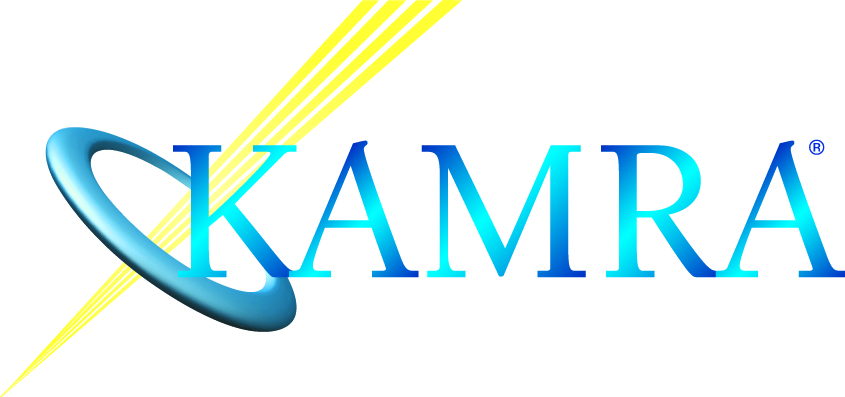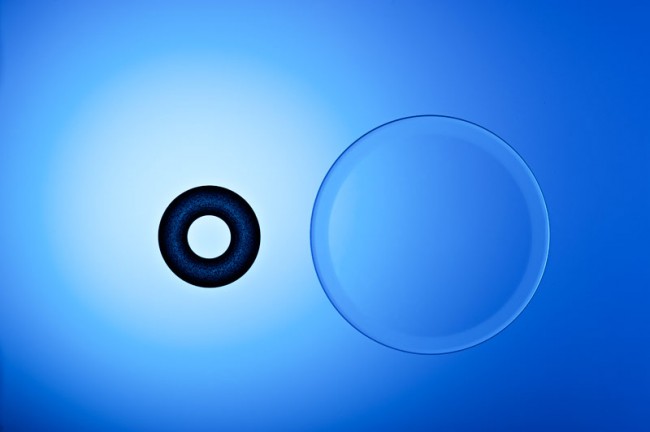Enjoy life without depending on reading glasses.
KAMRA report featured on “Good Morning America”
What is the KAMRA inlay treatment?
https://youtube.com/watch?v=yqhWcxRZq3M
The KAMRA inlay treatment is an eye procedure that restores near vision and reduces the constant frustrations of reading glasses. By providing a natural range of vision you can see — from near to far. It also offers long-term performance to help you continue to enjoy clear vision over time.
The KAMRA inlay has been used internationally for 10 years. In the U.S., the KAMRA inlay has been reviewed for safety and effectiveness and is now available.
Across the Page. Across the Room. Across the Years.
The KAMRA inlay is ideal for people who want to enjoy life without the constant frustrations of reading glasses. It provides a natural range of vision — from near to far — without blurry zones. In addition, it offers long-term performance that delivers clear near vision even as presbyopia progresses.
The Unique KAMRA Inlay Design
To compare size, note the KAMRA inlay is to the left and a contact lens is to the right above.
The KAMRA inlay is microscopically small and thin. Just 3.8 mm in diameter with a 1.6 mm central opening, it rests comfortably and securely in the cornea. The central aperture enables light to move directly from the front of the eye to the back of the eye, extending the natural range of vision. A total of 8,400 microscopic openings surround the central aperture to allow oxygen and nutrients to flow freely and naturally through the eye.
How the KAMRA Inlay Works
The inlay sits in the first few layers of the eye known as the cornea. Smaller and thinner than a contact lens, the inlay is a mini-ring with an opening – or pinhole – in the center. This pinhole allows only focused light to enter your eye. The KAMRA inlay is placed in only one of your eyes, allowing you to see up close, while maintaining your distance vision in both eyes. Your non-KAMRA eye is left untouched. Working together, the eyes allow you to see near to far. This is unlike monovision laser vision correction, which corrects one eye for near and one eye for distance and does not last over time.
The KAMRA® inlay treatment:
- Restores everyday vision so you can see text messages, a computer screen and the time on your wrist watch, without the constant frustrations of reading glasses or contact lenses.
- Provides a natural range of vision – from near to far – without blurry zones.
- Offers long-term performance to help you enjoy clear near vision over time.
The KAMRA Procedure
The following brief video demonstrates how the procedure is performed. You will notice an instrument is attached to the eye that allows delivery of the femto laser treatment. This is the same type of laser used for over ten million LASIK flaps. This laser creates the pocket. Thousands of microscopic gas bubbles are placed in the cornea creating a customized dissection plane or pocket. The pocket is then gently separated and opened. Finally, the KAMRA inlay is inserted, centered, and the pocket is closed and secure.
https://youtube.com/watch?v=iYEGg4ohoJ8
The entire KAMRA inlay procedure will typically take less than 20 minutes. A femto laser will be used to create protected pocket on the cornea, this is same laser used in LASIK surgery. Numbing drops will be applied to your eyes, to relieve discomfort. You will feel a brief pressure sensation on your eye during this part of the procedure. After the pocket is created, the inlay will be inserted and centered by Dr. Moretsky or Dr. Cassidy.
Special testing will be performed pre-op to identify critical landmarks in your vision to ensure proper centering. You will be awake and alert from start to finish. Dr. Moretsky or Dr. Cassidy will ask you to lie on your back and focus on a light above your eye. Remaining still and focusing on this light will help you achieve the best possible results.
Dr. Moretsky or Dr. Cassidy will place the KAMRA inlay in one of your eyes. The other eye remains untouched.
Kamra Inlay – Renewing Over 45 Vision
 FREQUENTLY ASKED QUESTIONS (FAQs) ABOUT THE KAMRA INLAY
FREQUENTLY ASKED QUESTIONS (FAQs) ABOUT THE KAMRA INLAY
WHAT IS THE KAMRA PROCEDURE?
The KAMRA inlay is a medical device that is implanted into the non-dominant eye to restore near vision and reduce or eliminate the constant frustration of reading glasses. The KAMRA inlay sits in the first few layers of the cornea (or clear window of the eye). Smaller and thinner than a contact lens, the inlay is a mini ring with an opening in the center. By using this pinhole effect, the inlay focuses light coming into the cornea. This restores near vision while retaining distance vision.
WHY DOES NEAR VISION FADE?
Presbyopia is the natural, gradual loss of the eyes’ ability to focus on nearby objects. It is generally noticeable around 40 -45 years of age and caused by a stiffening of the lens of the eye. To focus on nearby objects, the human crystalline lens must be flexible enough to change shape by thickening at its center and change focusing power in order to “accommodate”. With age, the lens stiffens and loses elasticity thereby losing accommodative focusing power, manifesting in presbyopia. Presbyopia can have multiple effects on quality of vision and quality of life and if uncorrected, results in an ability to perform once-effortless near tasks at a customary working distance. By age 45, presbyopia is the most prevalent eye disorder, often advanced to the point where some type of optical correction, such as reading glasses or bifocals is required.
HOW MUCH WILL THE KAMRA INLAY PROCEDURE IMPROVE MY NEAR VISION?
The KAMRA inlay restores everyday vision, so you can typically see text messages, see your computer screen, and your wristwatch without the constant frustration of reading glasses. The KAMRA inlay provides a natural range of vision from near-to-far without blurry zones. The KAMRA inlay is ideal for individuals who want to reduce their dependence on reading glasses and who meet all the medical criteria. It is important to understand there may be times when additional magnification is needed for small print, such as seeing in dim light or to perform near tasks for extended periods of time. Like any medical procedure, there are no guarantees but over 80% of patients can see 20/40 or better (magazine and newspapers, etc.) without reading glasses, according to the FDA studies.
HOW DOES THE KAMRA INLAY AFFECT MY NIGHT VISION?
The KAMRA inlay corrects imperfections in each individual’s near vision with pinhole optics. However, it is possible that night vision may be slightly affected in the KAMRA inlay eye.
DOES THE KAMRA INLAY PROCEDURE HURT?
There is minimum discomfort with the procedure. The patients are usually aware of a brief but intense pressure sensation on the eye during creation of the KAMRA pocket. There may be mild discomfort during the insertion of the KAMRA corneal inlay. The entire procedure is performed with the aid of numbing eyedrops.
HOW LONG DOES THE PROCEDURE TAKE?
The KAMRA procedure takes about 20 to 30 minutes.
HOW SOON CAN I RESUME DRIVING?
Obviously, KAMRA patients should not drive until they are confident that their vision is clear and stable. Typically, most patients drive themselves to our office the next day, if their vision is clear.
WHEN WILL I NOTICE MY NEAR VISION IMPROVE AFTER THE PROCEDURE?
Most patients will notice improvement the next day, but it may take several weeks to months before the full benefit is achieved.
HOW SOON CAN I RETURN TO WORK?
Most people return to work within one to two days, following the day of the procedure.
WHEN CAN I WEAR MAKEUP?
You should wait about two weeks before applying eye mascara. It is not the application that matters, but the removal and pressing around the eye.
WHEN CAN I SWIM AFTER THE KAMRA PROCEDURE?
You should not swim or enter a hot tub for about two weeks following the KAMRA procedure. This ensures a complete healing.
WHAT TECHNOLOGIES ARE EMPLOYED IN THE KAMRA PROCEDURE?
In addition to the standard normal comprehensive eye examination, the KAMRA procedure relies on the AcuFocus HD testing device to evaluate patients for the procedure, enabling Dr. Moretsky or Dr. Cassidy to identify early cataract formation, dryness of the eyes, and other potential problems. This precise tool measures and maps the uniqueness of each eye down to the most minute detail and custom fits the KAMRA procedure to each patient. Other types of corneal testing is performed, including topographic and thickness maps for further detailed evaluation.
In the operating room, the iFS IntraLase laser creates a thin pocket in the cornea (the clear window of the eye) to allow the KAMRA inlay to be inserted. The insertion of the inlay is performed under a microscope in sterile conditions.
WHAT IS THE iFS INTRALASE LASER?
The iFS IntraLase laser is a device that creates a pocket in the cornea using a low energy high speed laser. Thousands of microscopic gas bubbles are created in the cornea creating a dissection plane that is easily separated to create a pocket into which the KAMRA inlay is inserted. The iFS Intralase is an advanced fifth generation laser. By creating a precise computer-guided corneal pocket to a tolerance and accuracy of plus or minus 10 microns, the iFS laser improves the safety and visual results of the KAMRA inlay procedure.
SUMMATION:
Moretsky Cassidy Vision correction has listed a number of general questions in regards to the KAMRA inlay procedure, but understands that these may not answer all the questions you may have. Before considering the procedure, talk to Dr. Moretsky or Dr. Cassidy or one of our KAMRA counselors about the potential benefits or risks or visit www.kamra.com\safety.







